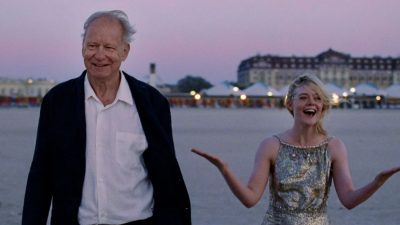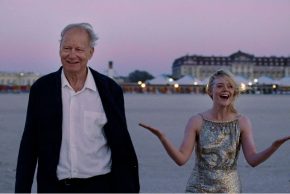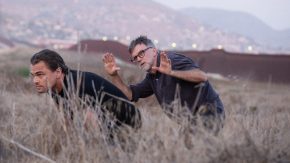Interview: Anna Rácz
Translation: Nóra Fehér
Your feet will immediately start to move when you learn that the latest production of the Székesfehérvár Ballet Theatre in the Bartók Spring series is set to the music of Boban Marković’s album Mrak, and it tries to recreate this incomparable world in its dance and stage presence. And when it turns out that the Boban Marković Orkestar will be performing in person! What else can you do at a time like this, even the cultural journalist is running to the online box office to make sure she doesn’t miss this special performance. And then he calls Attila Egerházi, the founding director of the Székesfehérvár Ballet, the choreographer-director of Parade, and asks him about what to expect.
How did you come across Boban Marković’s music and what inspired you to create a choreography to this music?
Because of my profession, I encounter a lot of diverse music, listening to music is a part of my life, it’s one of the foundations of my work as a choreographer. Boban Marković is an inescapable composer, you can’t help but listen to his music. He has been to Hungary several times, but even if he hadn’t, I would know him, at least from the Kusturica films, whose music has a very strong imprint on the world they present. So these music, Boban Marković’s compositions, reached my ears and I was captivated by the musical world he represented. What is also important is that this is dance music with a story, drama, humour and vitality, so that it could be the basis for a contemporary dance theatre work. As I do dance theatre, for me it is also clearly theatre music, and I have been planning to work with Boban Marković for a very long time, and now it is time.
The album Mrak, which inspired the performance, is said to be like a good Balkan party. Do you agree with this statement?
There are many ways of labelling this album, depending of course on what it means to each person. It’s also typical of Boban that he is looking for new ways, and he says that on this album they tried to be even less authentic in sound and instrumentation than on previous albums. They use a lot of pop, jazz, world music and folk elements, so it’s a patchwork that has a lot going on. This will be reflected in the strong attribute of the piece’s set, a patchwork skirt. It is very dynamic, elemental music that is extremely danceable.
What motivated the choice of title and, without spoiling anything of course, can you tell us something about the story inspired by this music?
It will be about different stories inspired by the music on the album, strung together in a garland and creating different atmospheres. The dramaturgy will follow this, these will be three to five-minute pieces by Boban and Egerházi, and I say this because we are also going to have a performance in May reflecting on István Örkény’s one-minute pieces. So the audience will be able to see stories that express different feelings about life, combined with music. The whole production is quite a show, and the title (Parade) is a bit ironic, because it refers to the raucousness, and also to the fact that this music is full of humour for me, which is reflected in the whole piece. It also holds up a mirror to us, because a parade always wants to be a raucous parade, it can remind us of a big parade, so there are many things that this title refers to. The title of the album, Mrak, means dark, but it’s also used in the sense that something is very good, very there in today’s terms. Since a new quality is born with the dance theatre performance, we definitely wanted to choose a different title from the album.
What did Boban Marković say about the choice of title?
I told him during a conversation and he really liked it, he felt it was expressive.
How did your dancers take to the idea of creating a piece to this kind of music?
It’s adorable music and great to listen to, but especially to dance to! They were open and the reception was definitely positive.
As a choreographer, how challenging is it for you to create contemporary dance choreography for a score that you can imagine dancing to something folkloric first?
It is a joyful challenge because I think that these are just stereotypes. I don’t want to illustrate this music, I want to visualise it. The creator, if he wants to be authentic, cannot do it in a way that meets some kind of perceived or real expectations. He can only see it as he sees or hears it. So obviously it is formulated through my filter. I had no expectations of myself to illustrate some kind of folk dance, but I was trying to create a world.
Do you allow yourself to be influenced by, for example, Kusturica films, or is it better to exclude these influences?
With art, there is no such kind of conformity. Everything affects an artist, and that’s how it should be. I am influenced by Kusturica films, of course, but I am also affected by Bach, for example, and by the state of nature that I see around me, and I could go on.
It is a very complex thing.It is a huge sensation that Boban Markovic and his orchestra will be performing live with you. What is it about working with them?
It is a meeting of two professional companies. As we have been working on a finished piece of music, we will only have two days of rehearsals together, but this meeting will be the most exciting moment in the process. We have a very intense two days before the premiere, when the production will take its final shape.
Is it likely that you will have to change your ideas during the rehearsals together, in live rehearsal?
There’s always an underlying chain of events, you have to fine-tune the ideas. I have to try out the stage world, I have a big directorial task ahead of me. The work of a choreographer-director is the most complex task in the theatre world, because in addition to working with music, dramaturgy, libretto and choreography, you also have to arrange the characters and make them work together. It’s a very complex and wonderful job that requires a lot of concentration. I’m sure there will be things to change, because it’s an associative play and it requires intuition. If there are any impulses during the staging, then of course things will have to be shaped. The production is finished when the last rehearsal is over, and a lot can evolve before then.
What are the two words that come to mind most about this production that you think will make people want to see it?
Pleasure dance and theatre, so it will definitely be a dance theatre performance. Dance theatre is an umbrella term where music and movement meet, two of the most ancient arts. Even at the beginning of our lives, we communicate with body language and sound when we know nothing about the world. We learn everything else afterwards. It is a great honour and a great joy from fate and from God that we can do this, and I think I can say that on behalf of Boban. Of course, all this involves a lot of sacrifice, sacrifice and struggle, but we do it because we believe it is worth it.
Interview: Anna Rácz
Translation: Nóra Fehér

























Comments